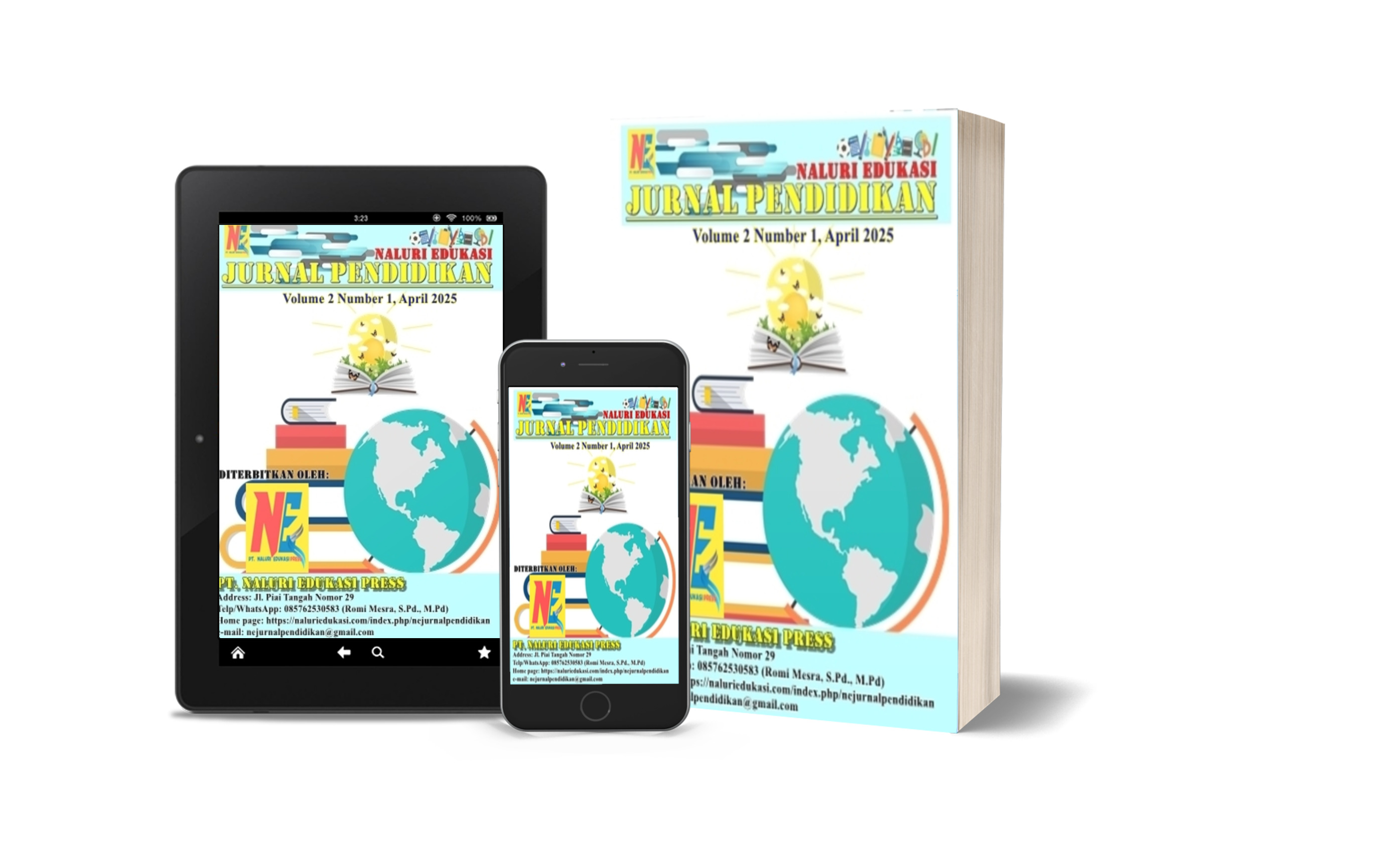Integration of Technology and Character Education in the Teaching Campus 6 Program at GMIM Tonsea Lama Elementary School: Transforming Learning in the Digital Era
DOI:
https://doi.org/10.64924/26arxr06Kata Kunci:
Integration, Technology and Character Education, Kampus Mengajar, Learning Transformation, Digital EraAbstrak
This study aims to analyze the implementation of technology integration and character education through the Teaching Campus Program at GMIM Tonsea Lama Elementary School and explore its impact on learning transformation in the digital era. The research method uses a qualitative approach with a case study design, with data collection techniques through methodological triangulation including participant observation, documentation, and in-depth interviews. Data analysis was conducted using the Miles and Huberman thematic analysis model with the stages of data reduction, data presentation, and conclusion drawing. The results of the study show significant success in improving students' literacy skills from 52% to 77% and numeracy from 38% to 67% through innovative programs such as "Read Aloud", "3 Vocabulary per Day", and "5 Minutes Playing with Favorite Numbers". The character development program through "Pen Pals", environmental activities, and digital literacy successfully formed empathy, environmental responsibility, and self-confidence in students. Learning transformation occurred through multi-stakeholder collaboration and technological adaptation within limited facilities, creating a sustainable and character-based learning model. This program proves that the integration of technology and character education can be implemented effectively with an adaptive and collaborative approach, making an important contribution to the development of quality education in Indonesia.
Referensi
Bates, A. W. (2019). Teaching in a digital age: Guidelines for designing teaching and learning. Tony Bates Associates Ltd.
Battistich, V., Schaps, E., & Wilson, N. (2004). Effects of an elementary school intervention on students' "connectedness" to school and social adjustment during middle school. Journal of Primary Prevention, 24(3), 243-262.
Berkowitz, M. W., & Bier, M. C. (2005). Character education: Parents as partners. Educational Leadership, 63(1), 64-69.
Bowen, G. A. (2009). Document analysis as a qualitative research method. Qualitative Research Journal, 9(2), 27-40.
Creswell, J. W. (2018). Research design: Qualitative, quantitative, and mixed methods approaches (5th ed.). Sage Publications.
Ditjen Diktiristek. (2021). Panduan program kampus mengajar angkatan 2. Kementerian Pendidikan, Kebudayaan, Riset, dan Teknologi.
Ellis, R. (2008). The study of second language acquisition (2nd ed.). Oxford University Press.
Freudenthal, H. (1991). Revisiting mathematics education. Kluwer Academic Publishers.
Fullan, M. (2007). The new meaning of educational change (4th ed.). Teachers College Press.
Gravemeijer, K. (1994). Developing realistic mathematics education. CD-β Press.
Hargreaves, A., & Fink, D. (2006). Sustainable leadership. Jossey-Bass.
Hoffman, M. L. (2000). Empathy and moral development: Implications for caring and justice. Cambridge University Press.
Husamah, H., Restian, A., & Widodo, R. (2024). Digital transformation in education: Challenges and opportunities in the post-pandemic era. International Journal of Educational Technology, 15(2), 45-62.
Johnson, D. W., & Johnson, R. T. (2014). Cooperative learning in 21st century. Anker Publishing.
Kohlberg, L. (1984). Essays on moral development: The psychology of moral development (Vol. 2). Harper & Row.
Kotter, J. P. (1996). Leading change. Harvard Business Review Press.
Krajcik, J. S., & Shin, N. (2014). Project-based learning. In R. K. Sawyer (Ed.), The Cambridge handbook of the learning sciences (pp. 275-297). Cambridge University Press.
Krashen, S. D. (1982). Principles and practice in second language acquisition. Pergamon Press.
Lickona, T. (1991). Educating for character: How our schools can teach respect and responsibility. Bantam Books.
Lincoln, Y. S., & Guba, E. G. (1985). Naturalistic inquiry. Sage Publications.
Miles, M. B., & Huberman, A. M. (2014). Qualitative data analysis: A methods sourcebook (3rd ed.). Sage Publications.
Mishra, P., & Koehler, M. J. (2006). Technological pedagogical content knowledge: A framework for teacher knowledge. Teachers College Record, 108(6), 1017-1054.
Nation, I. S. P. (2001). Learning vocabulary in another language. Cambridge University Press.
Prensky, M. (2010). Teaching digital natives: Partnering for real learning. Corwin Press.
Qurtubi, M., Sari, D. P., & Rahman, A. (2024). Integrasi penguatan pendidikan karakter dalam pembelajaran berbasis literasi digital pada peserta didik sekolah dasar. Jurnal Pendidikan Karakter, 12(1), 78-92.
Ribble, M. (2015). Digital citizenship in action: A technology integration approach. International Society for Technology in Education.
Rogers, E. M. (2003). Diffusion of innovations (5th ed.). Free Press.
Schumacher, E. F. (1973). Small is beautiful: A study of economics as if people mattered. Blond & Briggs.
Senge, P. M. (1990). The fifth discipline: The art and practice of the learning organization. Doubleday.
Spradley, J. P. (2016). Participant observation. Waveland Press.
Suwarsito, S., Pratama, R., & Wijaya, K. (2023). Literasi digital sebagai jalan penguatan pendidikan karakter di era Society 5.0. Jurnal Literasi Digital, 8(3), 156-171.
Tim Peneliti IRJE. (2024). Integrasi teknologi dalam pendidikan: Tantangan dan peluang pembelajaran digital di sekolah dasar. Indonesian Research Journal on Education, 4(2), 234-249.
Ubaidah, N. (2022). Digital literacy development in elementary education: A systematic review. Journal of Digital Learning, 7(4), 112-128.
Vygotsky, L. S. (1978). Mind in society: The development of higher psychological processes. Harvard University Press.
Wenger, E. (1998). Communities of practice: Learning, meaning, and identity. Cambridge University Press.
Unduhan
Diterbitkan
Terbitan
Bagian
Lisensi
Hak Cipta (c) 2025 NALURI EDUKASI JURNAL PENDIDIKAN

Artikel ini berlisensiCreative Commons Attribution-ShareAlike 4.0 International License.










